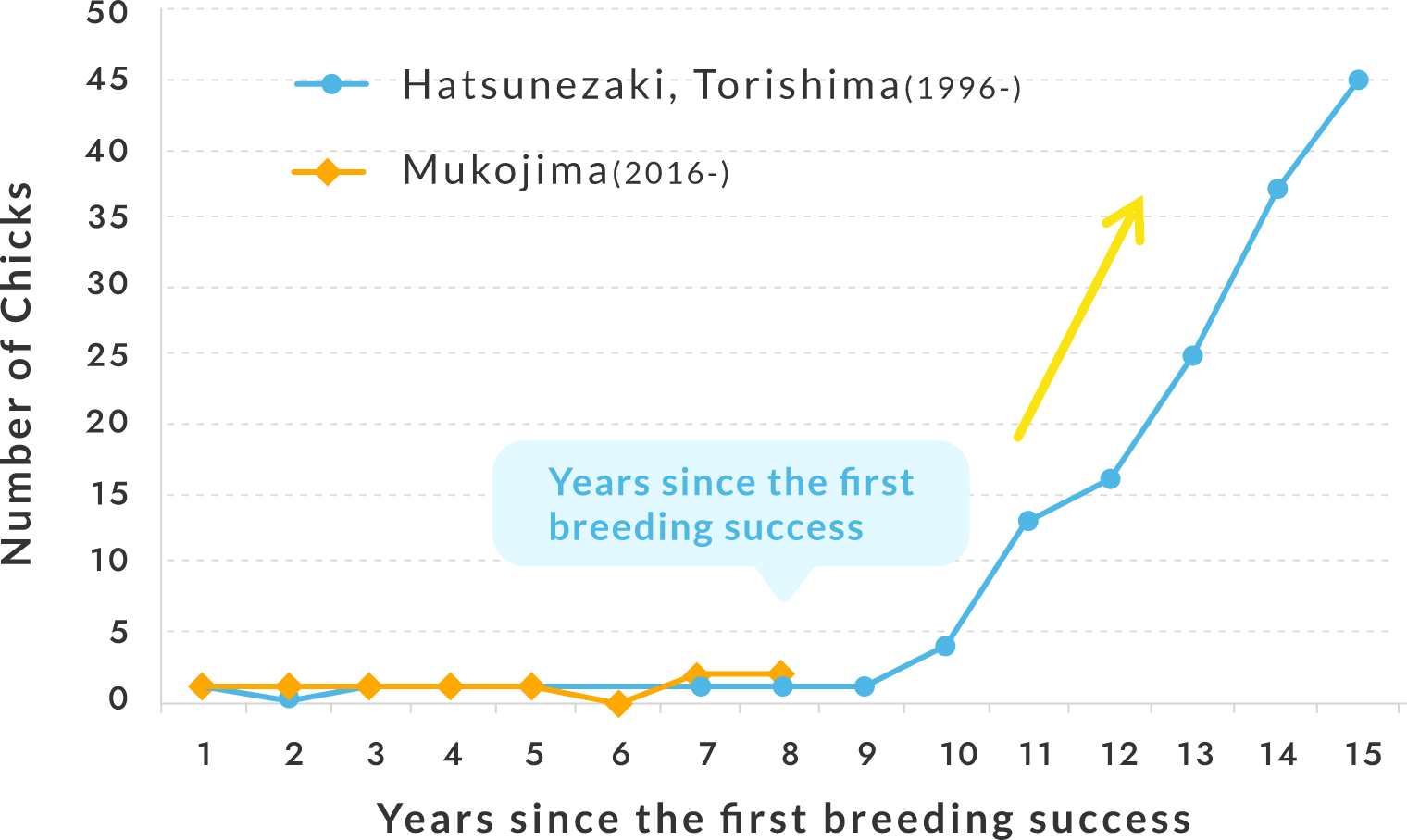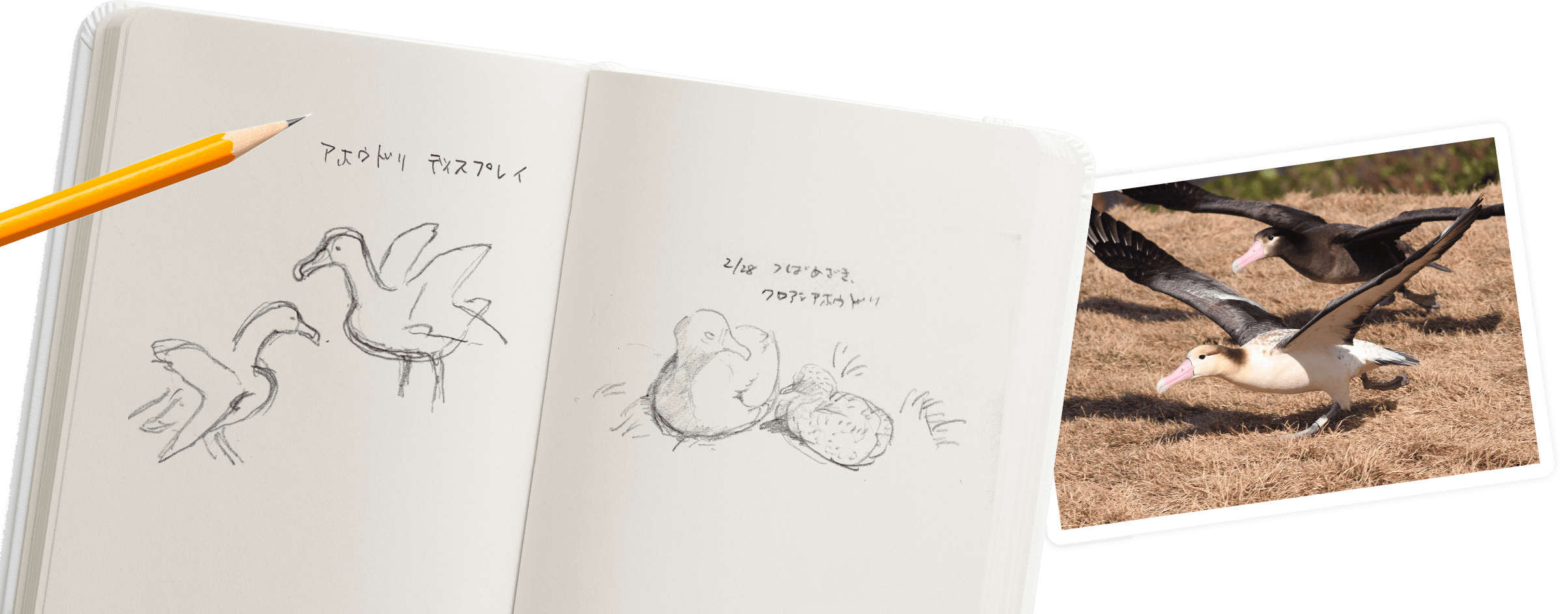Longing for the day when they are delisted from being an endangered species.
Do you want to join the Short-tailed Albatross conservation project by becoming a monthly supporter?
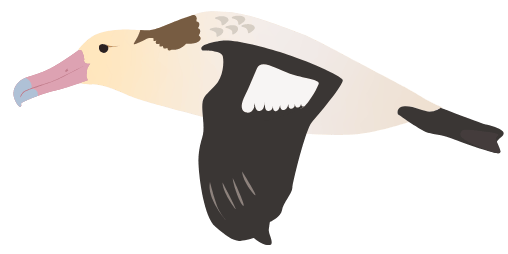
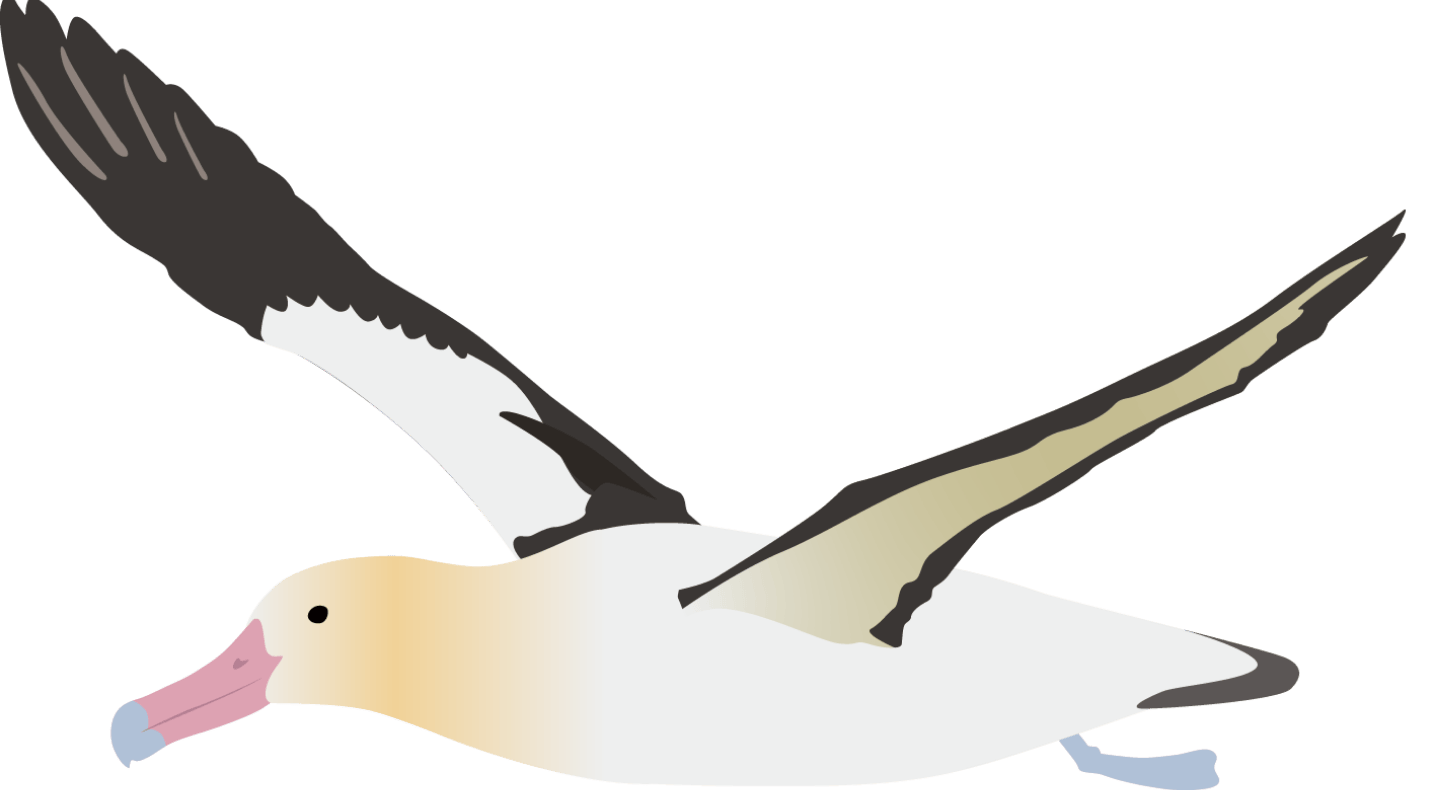





Scroll
We are looking for more supporters for
Albatross conservation
Currently
Aiming forsupporters



MISSION
From the brink of extinction 70 years ago,
the long road to restore the Albatross population
From the grasps of
extinction 70 years
ago,the long road to
restore the Albatross
populatio
The Short-tailed Albatross is a large seabird that has a wingspan of over two meters when fully spread out. This charismatic species has fascinated and drawn our attention since ancient times. It is said that the population of these birds once numbered several million, however they were hunted to near extinction for their feathers. A survey conducted in 1949 stated that the Short-tailed Albatross had most likely gone extinct. However, mere 10 birds were found again in 1951 on Torishima Island, and their numbers have recovered to around 8,600 individuals by 2024, due to focused conservation efforts. We are currently at a stage where the Short-tailed Albatross might be downlisted from the vulnerable to the near threatened category. We are just a couple of steps away from achieving this goal. We need your help and support for this final challenge, as we try to help the Short-tailed Albatross population recover to its past numbers.




Short-tailed Albatross conservation efforts, and results to date.
The Yamashina Institute for Ornithology began consistent conservation efforts for Short-tailed Albatross in 1991. On top of helping increase the population at Torishima Island, we are conducting a project to try to restore a population at the Mukojima Island, which was once a home for millions of Short-tailed Albatross.
Until recently, it was very difficult to spot a Short-tailed Albatross outside of the waters surrounding Torishima Island. However, sighting reports of Short-tailed Albatross on the ferry between Tokyo and Hachijo Island, have increased dramatically in recent years. By continuing these conservation efforts, we may be able to see huge groups of albatrosses traversing the skies like ancient times.
Short-tailed Albatross colonies
*Data as of 2024
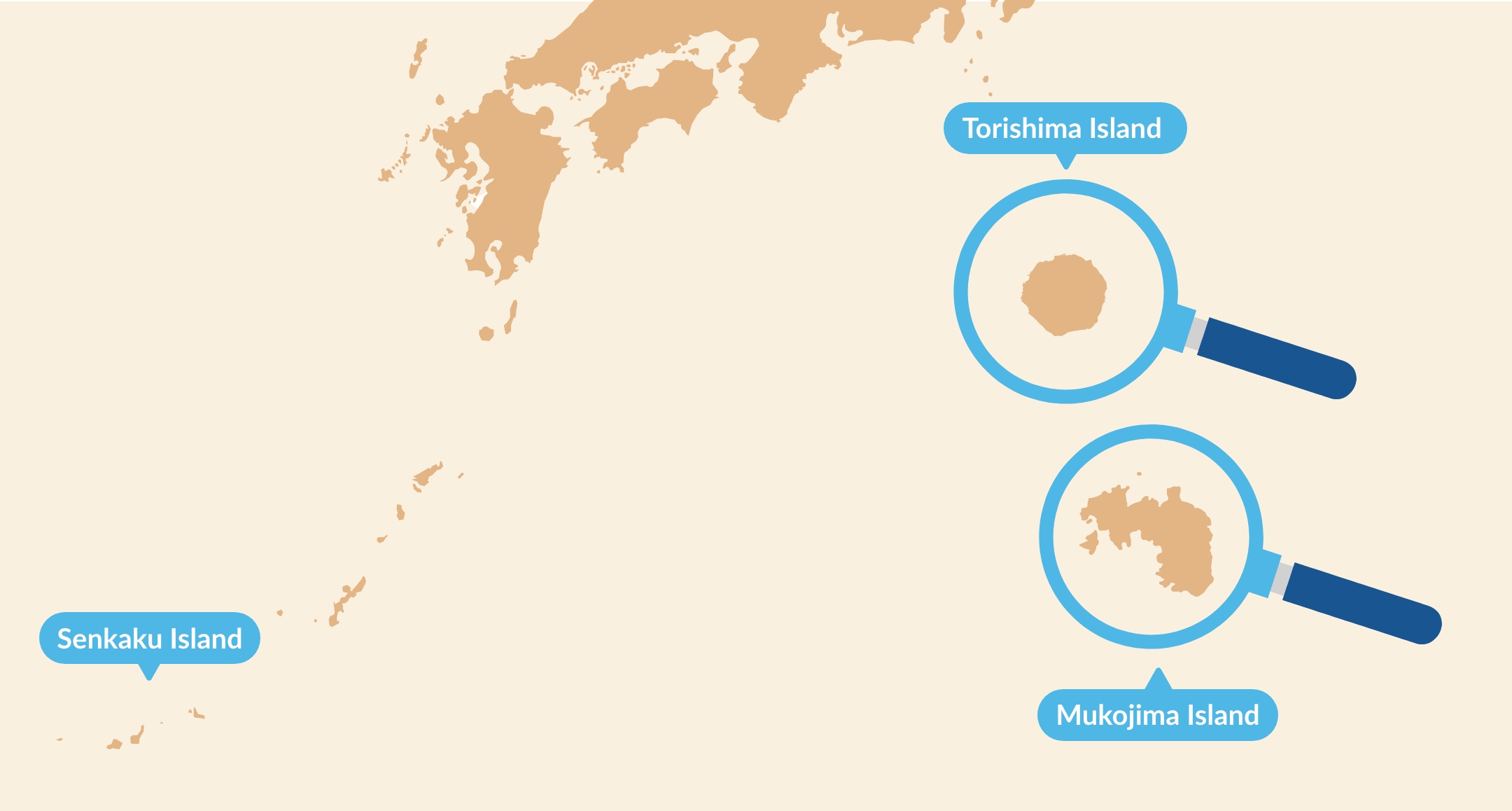
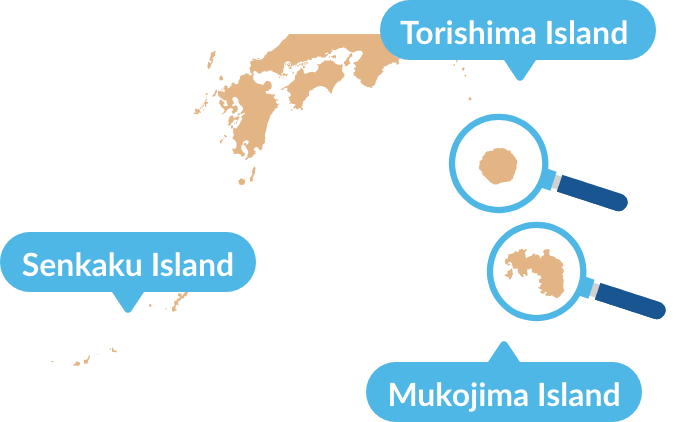
-
Torishima Island
Estimated individuals
8,600
Number of chicks
1,173
-
Mukojima Island
Observed Individuals
14
Number of chicks
3
- A colony of approximately 100 pairs exist at the Senkaku Island as well. Surveys have not been conducted here recently due to political reasons, however it is a very vital colony. Recent studies show that the individuals that mainly breed at Torishima Island and Senkaku Island are genetically, morphologically, and ethologically distinct that the two populations should be treated as separate species. Further research is currently being conducted.
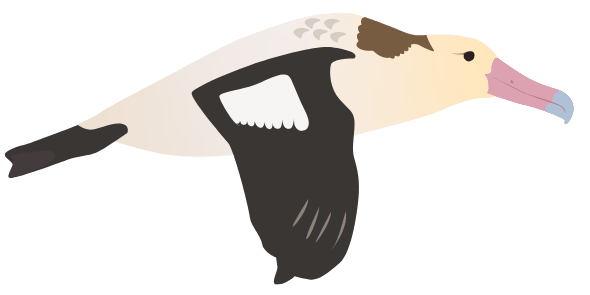
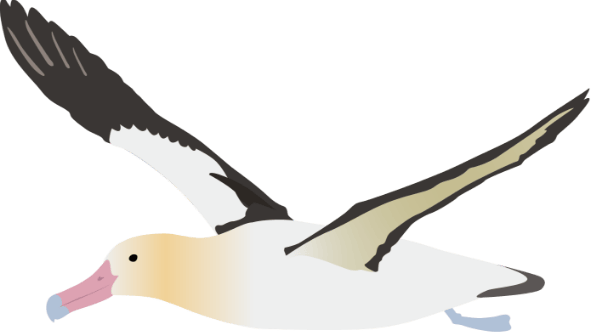

Aiming for the unprecedented recovery of the Short-tailed Albatross.
For the Short-tailed Albatross to be downlisted from the vulnerable to the near threatened category, the Torishima Island colony has to continue expanding, while the Mukojima Island population needs to increase, and establish itself as a new colony. Our goal is for over 50 pairs to breed consistently at the Mukojima Island. Our current midway goals for 2035 are as follows.
For over 10 pairs to breed successfully at the Mukojima Island over the period of 3 years.
Only a maximum of 3 pairs breed at the Mukojima Island in recent years. We predict that the chicks that grew up on the island (12 chicks have fledged between 2016-2024), will return and begin breeding in the near future (so far, 4 have returned, and 2 have bred). In order to ensure the return, and also to attract other young birds, the continuation of installing attraction devices is essential.
From our experiences conserving the Torishima Island population, we have learned that placing life-sized decoys and sound devices does indeed help with attracting Short-tailed Albatross to a new location, and also that once multiple pairs start breeding at the colony, the number of birds increases rapidly. However, it did take over 10 years for a new colony to establish itself. Once more pairs start to breed at Mukojima Island, the birds will call and attract other individuals on their own, so the decoys and sound devices will no longer be needed.
It is essential for us to continue to artificially attract individuals to the island, until there are at least 10 pairs that breed consistently on the island.
The requirements to downlist the Short-tailed Albatross
from the vulnerable to the near threatened category.
1) Over 750 breeding pairs.
2) Over a 6% increase in population over the span of 3 years for 7 consecutive years at 3 colonies (islands).
3) At least 2 of the colonies are outside Torishima island, and at least 50 breeding pairs at each subsequent colony.

A complete recovery of the Short-tailed Albatross that was once thought to have gone extinct.
Such cases of recovery are very rare even worldwide.
Successful recovery of the Short-tailed Albatross would
be a huge beacon of hope for people around the world
that are trying to protect endangered species.
In order to continue the monitoring and conservation efforts to make this project a success, continuous funding is needed.
Until recently, the conservation project was funded by the national and local governments. However the amount of funding has decreased, as the number of Short-tailed Albatross have increased. We’re getting close to our goals, however more continued effort is needed for the project to succeed.
Yamashina Institute for Ornithology aims to conduct a fieldwork survey at least once a year at Torishima Island, and at least three times a year at Mukojima Island. In order to conduct these surveys, a budget of around 12,000,000 yen (approx $80,000) is needed annually. We are currently at the verge of being able to continue the conservation efforts and monitoring surveys of the species.
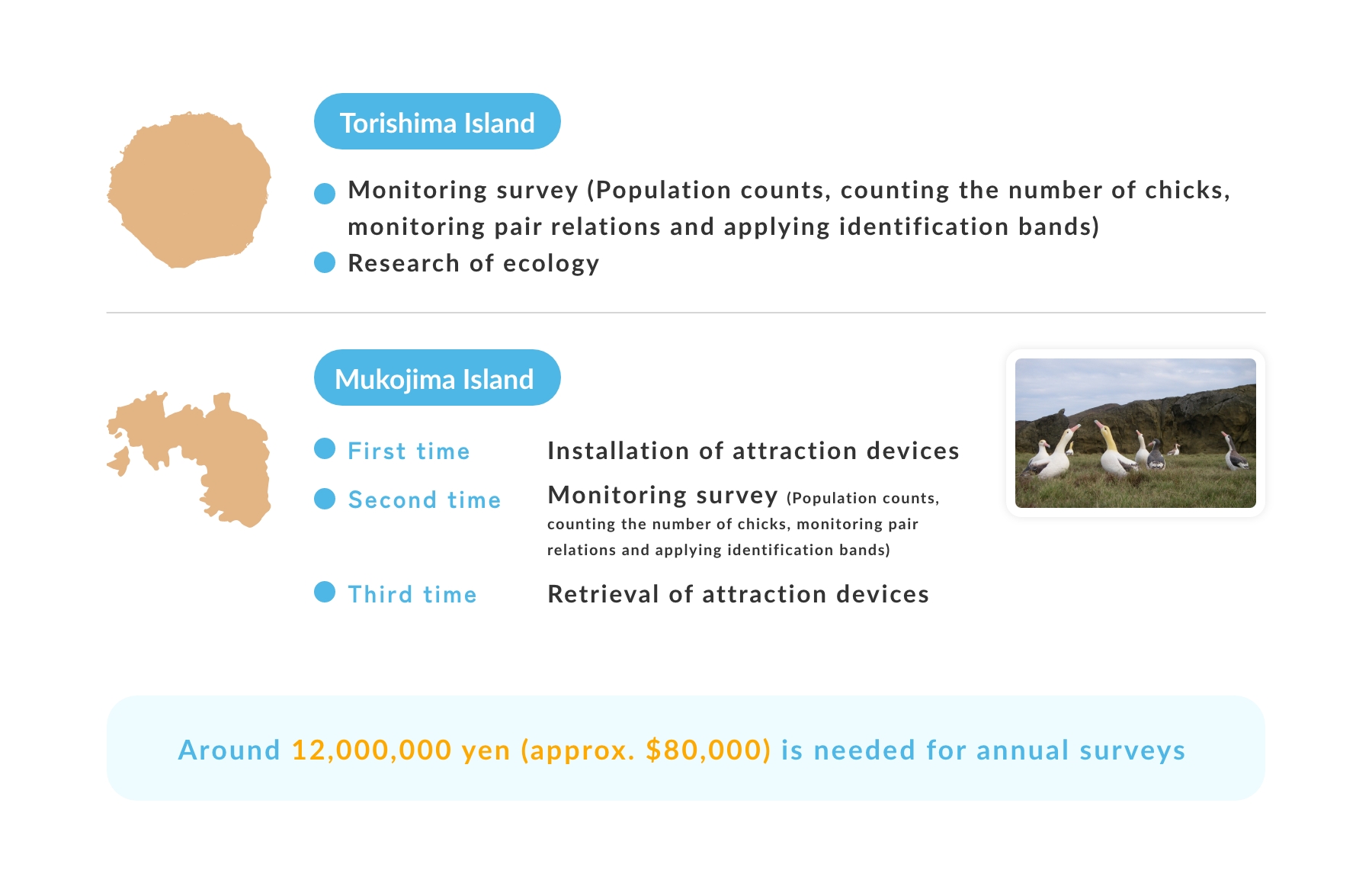

SUPPORT
From a donation of 500 JPY a month,
you too can become a part of
this conservation project.
From a donation
of 500 JPY a month,
you too can become
a part of this
conservation project.
you too can become a part of
this conservation project.
of 500 JPY a month,
you too can become
a part of this
conservation project.
We ask you to become a monthly supporter to help support this project to downlist
the Short-tailed Albatross from the vulnerable to the near threatened category
within the next 10 years.
We welcome everyone that would like to help our dream
to recover the population of Short-tailed Albatross.
Newsletters (in Japanese) will be sent to all monthly supporters.
Monthly Plans
Annual
Plan
-
Donations made to Yamashina Institute for Ornithology can be used towards tax breaks.
For individuals outside of Japan, please refer to your countries tax laws for further information.
For individuals in Japan.
As of August 1, 2022, our organization has been certified by the government as a corporation eligible for tax deductions.
When an individual makes a donation to our organization (including membership fees), you can choose to apply either an income deduction or a tax credit. When filing income tax returns, you can select the option that benefits you the most. Please make sure to keep the receipt issued by our organization as they are required when filing your taxes.- If choosing an income deduction, attach the receipt to your tax return.
- If choosing a tax credit, attach both the receipt and a tax credit certification to your tax return.
Income Deduction
(Income Amount) ー(Income Deduction Amount)
×Tax Rate=Tax AmountSince the tax rate is applied after deducting the income amount, the tax reduction effect is greater for high-income individuals with a higher income tax rate.
Tax Credit
(Tax Amount) ー(Tax Credit Amount)
The deduction amount which is calculated based on the donation amount, is directly subtracted from the tax amount regardless of the tax rate.
This provides a significant tax reduction effect even for small donors.For corporations
The Yamashina Institute for Ornithology is a Special Public Interest Corporation recognized under the Corporation Tax Act. Donations to a Special Public Interest Corporation are eligible for deduction as losses, separate from general donations. Please use the receipt issued by our corporation when filing taxes. Since April 1, 2012, it has been possible to file your tax return with just the receipt, and no certificate proving our status as a Special Public Interest Corporation is required.
-
FAQ
Can I make a single donation?
Yes it's possible.
Please donate through this form. Make sure to double check that the [Payment Frequency] is selected to [one time].If I select the option for monthly/annually donations, how long will the donations continue for? Is it possible to opt out?
It's possible to opt out whenever you'd like. Every time a donation is made, an email will be sent to you. The instructions to opt out will be sent out in this email, so please follow the instructions there.
This project aims to remove the Short-tailed Albatross population from the endangered species list by 2035. We'll continue to let you know about our progress through our newsletter. We would be grateful for continued donations until our goal is achieved.Will I get a receipt for the donations?
Yes. All donations made for the year (January 1st - December 31st) will be totalled, and a receipt will be sent to your email address the following January.
An email will also be sent to you after every donation confirming that the payment has gone through.I'm a registered supporter, and I received a payment failure notification. What should I do? NEW!
Your card may need updating due to:
・Changed credit card number
・Updated expiration date
Please use the "Re-payment Form" in the notification to submit your new card information.How can I change my credit card? NEW!
Please contact us by e-mail (albatross@yamashina.or.jp). We’ll send the "Card Information Change Form."
How can I change my donation amount? NEW!
Please contact us by e-mail (albatross@yamashina.or.jp). We’ll send the format.
VOICE
The voice of our supporters that
cheer on our efforts.
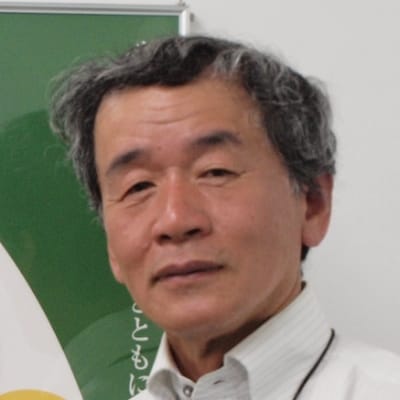
President of the Wild Bird Society of Japan, Emeritus professor at Rikkyo University
Ueda, Keisuke
The Joy of Living Together
The short-tailed Albatross was once on the brink of extinction. Although they have escaped this dire situation and their population is gradually recovering, Torishima Island always poses a threat of eruption. To address this, the Yamashina Institute for Ornithology has initiated a attraction project using decoys to establish a new breeding ground for the Short tailed Albatross on Mukojima Island. I feel immense joy in sharing this small planet with these beautiful birds. We kindly ask for your support to ensure the success of this project.

Chief Researcher at National Museum of Nature and Science, Department of Zoology, Division of Vertebrates
Tajima, Yuko
The Short-tailed Albatross is one of Japan's endangered species. Even though they haven't gone extinct, the history of these birds and the degradation of their surrounding environment have been shocking. Human actions have caused a significant decline in their population. The launch of a project to conserve the Short-tailed Albatross is truly exciting! I cannot help but support this initiative. I send my heartfelt cheers! Best of luck to the Short-tailed Albatross population, and the researchers involved in this project.

Emeritus professor at the University of Tokyo, Former President of the Ornithological Society of Japan
Higuchi, Hiroyoshi
The Short-tailed Albatross, with its graceful appearance and endearing expressions, has captivated many people. However, the species future is far from bright. The Short-tailed Albatross faces serious challenges, including changes in the marine environment, degradation of breeding habitat, bycatch in fisheries, marine plastic pollution, and constant threats of eruption at the breeding site. What is essential for the conservation of the species, is continuous monitoring of the population and its habitat. The Short-tailed Albatross’s habitat is vast, and research and conservation work on its uninhabited breeding island can be extremely challenging. Both the research and conservation activities require substantial energy and significant financial resources. Despite this, government supports are receding, partly due to the population increase of the Short-tailed Albatross. However, numerous issues do remain unresolved. The future of the Short-tailed Albatross depends on continued conservation efforts. I strongly hope that this project will lead to greater understanding and supports from many people.
NEWS



